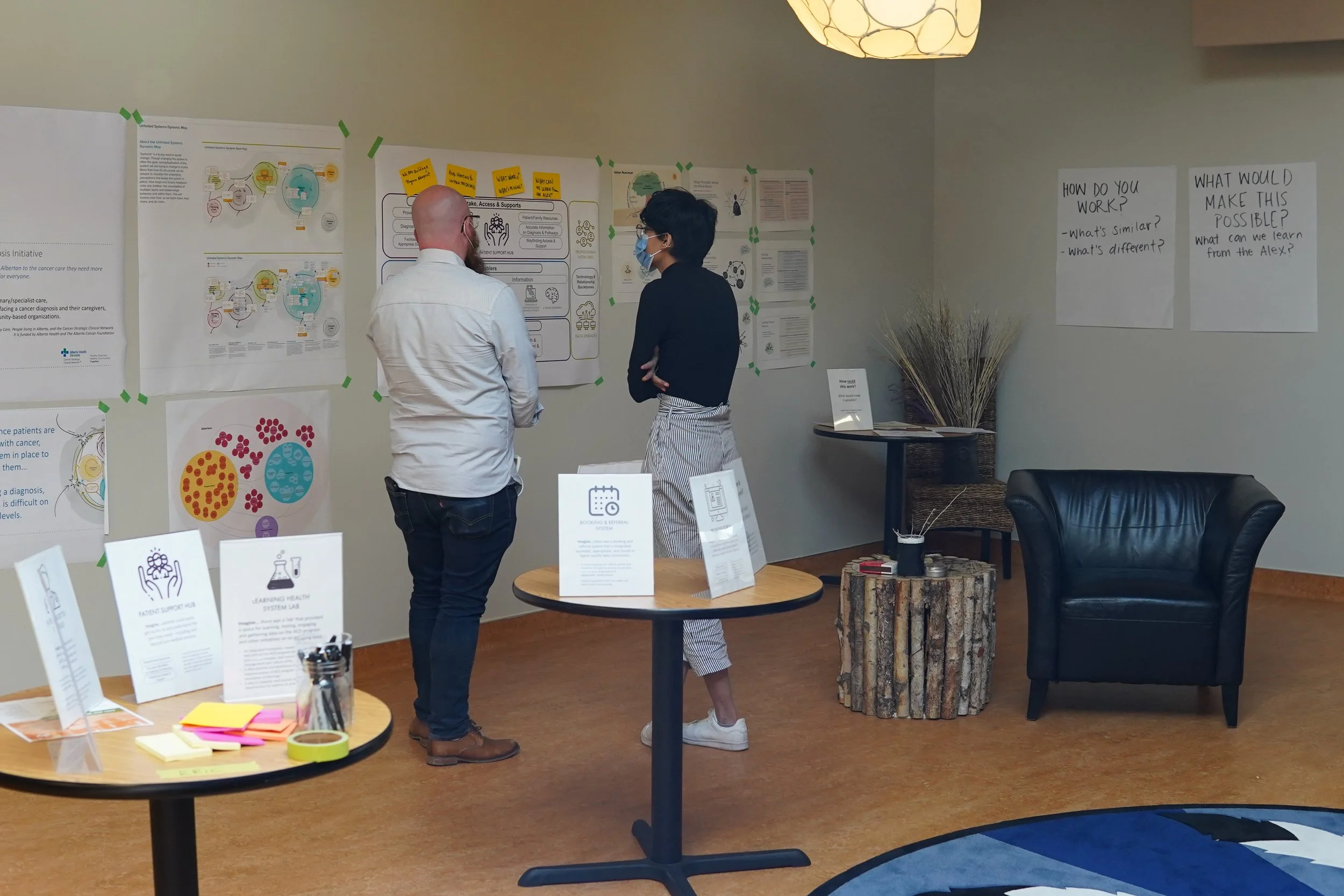Alberta Health Services
Improving the experience of someone diagnosed with cancer.
Today, there is no provincial diagnosis program to help coordinate and accelerate cancer diagnosis.
Working with patients, families, communities and Primary Care, J5 Design & the Cancer Strategic Clinical Network are co-designing an Alberta Cancer Diagnosis Program to improve continuity between primary/specialist-care, and optimize support for Albertans potentially facing a cancer diagnosis.
Desired outcomes of the project are:
Patients: timely diagnosis and supports in navigating the cancer system.
Primary care providers: consistent processes for accessing appropriate tests and referrals and enhanced communication to expedite and support patients through diagnosis.
Health system: coordinated and best use of resources with elimination of unnecessary tests and avoidance of hospitalizations.

Engagement is strategic to this initiative.
Engaging a broad range of clinicians, people, and communities will help us design a cancer diagnosis program that is inclusive and meets the needs of providers and Albertans in all communities.
Engagement began in January 2022. The team met with newcomers, people who are older and younger, people from rural and remote communities, people with Indigenous perspectives, people with disabilities, gender and sexual minorities.
We asked them how they see the world, how they use the health system, what would better look like for them and their community, and what could we do to make cancer diagnosis easier. From all of these stories, insights were catalogued and will be used to create design principles and the ACD Program.
For more detail about the engagement process and an overview of the design principles, you can listen to Fay Strohschein's presentation here: Alberta Cancer Diagnosis Initiative - Engagement Methods & Design Principles.

KEY INSIGHTS
A systems based approach.
Through initial engagement with stakeholders we worked to construct a model of how the current knowledge, research and patient perspectives are understood. It also offers a mental model for understanding the current state of patient journeys inside and outside the system. Called the System Dynamic Map – it is currently serving as a base layer for locating and understanding additional secondary research, stakeholder perspectives, enablers and barriers as they are uncovered by engagement.
This map of “loops within loops” has proven to be a powerful tool for patients and clinicians to describe the shortcuts and barriers they’ve experienced. And to help up bridge the gap between traditional process improvement processes and more humanistic approaches.
J5 Design brings expertise in diverse and inclusive engagement that will help meets the needs of all Albertans in all communities. Gender-based Analysis Plus methods are being used to inform the program design.
What now?
The work with Alberta Health Services is ongoing. To advance this transformative vision, we are continuing to engage with patients and families, primary care providers, and AHS.
Our collective efforts are informing an operational plan for a centralized and coordinated cancer diagnosis program (program governance, resource requirements, implementation plan, research priorities, measurement framework and the design of clinical processes and measures for multiple priority cancer diagnosis pathways).
We continue to work on the following:
Comprehensive environmental scan of international initiatives that accelerate diagnosis,
Qualitative research of patients and primary care provider perspectives on the diagnostic phase of care,
Discussions with Primary Care to co-create a roadmap of innovation opportunities and improvements,
Alignment with strategies and structures established to advance the Alberta Surgical Initiative,
A governance structure to be established collaboratively with primary care, patients and families.

